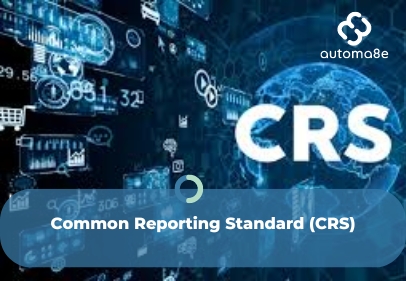The Common Reporting Standard (CRS), introduced in 2017, marks a significant leap in the global pursuit of financial transparency. At its essence, the CRS fosters collaboration among tax authorities worldwide, enabling an automated exchange of confidential personal and financial data. This initiative specifically targets foreign nationals residing in participating authorities, forging a united front against international tax evasion.
Functioning as a standardized, multilateral framework, the CRS streamlines the sharing of crucial information between financial institutions and tax authorities. By orchestrating this automated data exchange, the CRS aims to expose undisclosed assets and income concealed in offshore accounts, striving to create a more transparent and accountable global financial ecosystem.
With over 70 tax authorities actively engaged in the CRS, the initiative serves as a dynamic force reshaping the landscape of combatting offshore tax evasion. The system involves meticulous data collection by financial institutions during the account-opening process, focusing on fundamental personal details and crucial financial identifiers. If a variance is detected between tax residency and the country of residence, an automatic reporting process is triggered.
The CRS network spans globally, with early adopters like the United Kingdom, Germany, and Australia leading the way. Notably, the United States operates independently, relying on its robust Foreign Account Tax Compliance Act (FATCA) framework and remains outside the CRS network. This diversity in approaches highlights the complex strategies nations employ in their fight against offshore tax evasion.
Distinguishing itself from FATCA, the CRS operates as a multilateral framework without the enforcement muscle of its U.S. counterpart. While both initiatives share the common goal of combating offshore tax evasion, FATCA empowers the United States with the authority to impose penalties on non-compliant foreign financial institutions – a feature absent in the CRS.
A critical element in the CRS mechanism is the verification of tax residency. Tax residency, a factual determination based on each country’s tax laws, is not a matter of choice. Individuals’ factors like physical presence, permanent home, and economic ties hold sway, while businesses consider the location of headquarters, management, and economic activity.
FAQs on CRS:
The CRS, initiated in 2017, is a groundbreaking collaboration among global tax authorities. Its primary aim is to streamline the exchange of confidential personal and financial data related to foreign nationals residing within participating authorities.
The roots of CRS can be traced back to earlier initiatives, such as the European Savings Directive in 2003 and the United States’ Foreign Account Tax Compliance Act (FATCA) in 2010. These bilateral agreements laid the groundwork for the standardized, multilateral framework we now know as the Common Reporting Standard.
CRS operates with precision, with financial institutions in participating countries collecting a comprehensive set of personal and financial details when a new customer opens an account. This includes basic information and crucial financial identifiers, with a keen focus on tax residency. If tax residency differs from the country of residence, an automatic reporting process is triggered.
The CRS network spans over 70 tax authorities globally, with pioneers like the United Kingdom, Germany, and Australia leading the way. Notably, the United States, relying on its robust FATCA framework, remains outside the CRS network. A detailed list of countries can be found here.
While both CRS and FATCA combat offshore tax evasion, their approaches differ. CRS functions as a multilateral framework without the enforcement muscle of FATCA. FATCA empowers the U.S. with the authority to impose penalties on non-compliant foreign financial institutions.
Tax residency, a pivotal element in CRS, is determined based on specific criteria established by each country’s tax laws. The OECD website provides resources and interactive tools to help individuals navigate the complexities of residency rules.
CRS continuously evolves to address challenges. Recent developments include expanding the reporting scope to include beneficial ownership information, enhancing the system’s effectiveness in identifying ultimate beneficiaries and preventing tax avoidance.
In conclusion, the Common Reporting Standard stands as a dynamic force in the ongoing battle against offshore tax evasion. As it adapts and expands its capabilities, the CRS reinforces the collective commitment to constructing a financial environment free from the shadows of illicit financial activities. The strides achieved underscore a united front against those seeking to undermine the principles of financial integrity and accountability, marking a change in thinking towards a more interconnected and vigilant global financial community.
